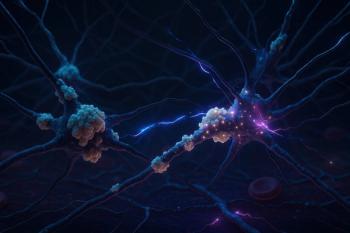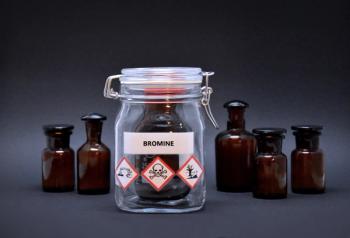
- Vol 30 No 7
- Volume 30
- Issue 7
Crime and Therapy: Good News About Pharmacotherapy for ADHD
Some criminal activity can be eliminated by pharmacotherapy for ADHD. Should this information influence clinical practice? The short answer is an unequivocal “yes.”
ADHD, criminality, pharmacotherapy, and substance abuse typically meet one another in media stories decrying the overuse of drug therapy for ADHD. In a welcome contrast to that popular tale, an elegant research project by
I call the research elegant because it uses a large Swedish population registry to track verified prescriptions of stimulant medications for ADHD along with verified evidence of criminal activity. Because the large sample deflects criticisms of low power, the population sample provides a representative sample and the use of registries deals with possible investigator biases in making diagnoses. And in Sweden, findings indicate that the prevalence of treated ADHD is only 0.7%2; thus, it is highly likely that the patients in the Swedish registry truly had ADHD. We cannot accuse the Swedes of
Elegance and simplicity often travel together. That they traveled to Sweden is seen in the simple statement of the main result: “Among patients with ADHD, rates of criminality were lower during periods when they were receiving ADHD medication.”1(p2006) Among 25,656 patients with ADHD, pharmacotherapy for the disorder reduced criminality by 32% for men and by 41% for women.
The reduction in criminality afforded by ADHD medications was equally high for stimulant and nonstimulant medications and for patients with and without a history of conduct disorder. The probability of committing a crime increased when ADHD patients moved from a treatment period to a nontreatment period and decreased when they moved from a nontreatment period to a treatment period. These simple results are easy to explain and difficult to refute.
Although the work by Lichtenstein and colleagues does not explain why ADHD pharmacotherapy reduces criminality, earlier work offers reasonable explanations.
Studying the effects of pharmacotherapy for ADHD on crime makes sense. Decades of research show that ADHD is associated with
We now know that some criminal activity can be eliminated by pharmacotherapy for ADHD. Should this information influence clinical practice? The short answer is an unequivocal “yes.” Despite media outcries about the overmedication of youths, ADHD is not routinely managed with pharmacotherapy. In a 2007-2008
Froehlich and colleagues15 reported that 8.7% of 3082 youths in an epidemiological sample met DSM-IV criteria for ADHD.
The ability of ADHD medications to reduce criminality should remind clinicians that the goal of ADHD pharmacotherapy is not simply a reduction of ADHD’s core symptoms of inattention, hyperactivity, and impulsivity. As Rostain and colleagues17 discuss, the treatment goals for ADHD should go beyond symptomatic improvement and short-term treatment response. These authors counsel clinicians to set the bar high when defining treatment success by using ADHD treatments to improve the functional status of patients, including non-core symptoms such as aggression, which are known to respond to medication. Although the initial improvements in ADHD symptoms can be dramatic, these should not obscure the need to address outcomes in other areas that may require an increased intensity of pharmacotherapy or the use of ajunct psychosocial
The ability of ADHD medications to reduce criminality clearly has implications for the treatment of ADHD in prisoners. Some work suggests that the clinical features of ADHD are more severe for prisoners with ADHD than for others with ADHD.12 Among imprisoned youths, higher levels of hyperactive/impulsive symptoms, but not inattentive symptoms, predicted violent and nonviolent breaches of prison discipline.18 The effective treatment of ADHD in prisoners would likely facilitate rehabilitation and decrease recidivism. Given the high rates of recidivism, any method of dealing with this issue should be welcomed by the prison system.
The prison system is, however, over-burdened, and pharmacotherapy for prisoners with ADHD is controversial.
Although no studies have examined the diversion of stimulants among prisoners, in their review of 21 studies of students, Wilens and colleagues20 reported that the lifetime rates of diversion ranged from 16% to 29% of students. Notably, extended-release preparations were less likely to be diverted than immediate-release preparations, which is probably because of the greater difficulty in transforming extended-release products into a compound with abuse potential.
Burns19 also raises other concerns. Prisoners who seek to misuse or abuse stimulants would likely intimidate or assault prisoners with ADHD who are under treatment. And practical issues must be considered. Prison psychiatric services could be overwhelmed by drug-seeking inmates simulating ADHD, because prison formularies would need to adopt costly storage, inventory, and handling procedures.
Because of these concerns, nonstimulant treatment has been suggested as the first approach to ADHD
Nothing in this commentary, or in the report by Lichtenstein and colleagues,1 should be taken to mean that ADHD medications will prevent crime in people without ADHD or that the appropriate treatment of ADHD will lead to dramatic reductions in the overall crime rate. The causes of criminal behavior are complex and multifactorial. Although
Disclosures:
Dr Faraone is Professor of Psychiatry and of Neuroscience and Physiology and Director of Research at SUNY Upstate Medical University in Syracuse, NY. He reports that in the past year, he received consulting income and/or research support from Shire, Akili Interactive Labs, SynapDx, Vaya Pharma, and Alcobra and research support from the National Institutes of Health. His institution is seeking a patent for the use of sodium-hydrogen exchange inhibitors in the treatment of ADHD. In previous years, he received consulting fees or was on Advisory Boards or participated in continuing medical education programs sponsored by Shire, Alcobra, Otsuka, McNeil, Janssen, Novartis, Pfizer, and Eli Lilly. Dr Faraone receives royalties from his books Straight Talk About Your Child’s Mental Health (Guilford Press) and Schizophrenia: The Facts (Oxford University Press).
References:
1. Lichtenstein P, Halldner L, Zetterqvist J, et al. Medication for attention deficit-hyperactivity disorder and criminality. N Engl J Med. 2012;367:2006-2014.
2. Hjern A, Weitoft GR, Lindblad F. Social adversity predicts ADHD-medication in school children-a national cohort study. Acta Paediatr. 2010;99:920-924.
3. Faraone SV, Glatt SJ. A comparison of the efficacy of medications for adult attention-deficit/hyperactivity disorder using meta-analysis of effect size. J Clin Psychiatry. 2010;71:754-763.
4. Faraone SV, Buitelaar J. Comparing the efficacy of stimulants for ADHD in children and adolescents using meta-analysis. Eur Child Adolesc Psychiatry. 2010;19:353-364.
5. Connor DF, Glatt SJ, Lopez ID, et al. Psychopharmacology and aggression. I: a meta-analysis of stimulant effects on overt/covert aggression-related behaviors in ADHD. J Am Acad Child Adolesc Psychiatry. 2002;41:253-261.
6. Fredriksen M, Halmøy A, Faraone SV, Haavik J. Long-term efficacy and safety of treatment with stimulants and atomoxetine in adult ADHD: a review of controlled and naturalistic studies. Eur Neuropsychopharmacol. 2012 Aug 20; [Epub ahead of print].
7. Wilens TE, Faraone SV, Biederman J, Gunawardene S. Does stimulant therapy of attention-deficit/hyperactivity disorder beget later substance abuse? A meta-analytic review of the literature. Pediatrics. 2003;111:179-185.
8. Biederman J, Petty CR, Dolan C, et al. The long-term longitudinal course of oppositional defiant disorder and conduct disorder in ADHD boys: findings from a controlled 10-year prospective longitudinal follow-up study. Psychol Med. 2008;38:1027-1036.
9. Barkely RA, Fischer M, Smallish L, Fletcher K. Young adult follow-up of hyperactive children: antisocial activities and drug use. J Child Psychol Psychiatry. 2004;45:195-211.
10. Ghanizadeh A, Mohammadi MR, Akhondzadeh S, Sanaei-Zadeh H. Attention deficit hyperactivity disorder in imprisoned individuals-a review. Psychiatr Danub. 2011;23:139-144.
11. Eyestone LL, Howell RJ. An epidemiological study of attention-deficit hyperactivity disorder and major depression in a male prison population. Bull Am Acad Psychiatry Law. 1994;22:181-193.
12. Ginsberg Y, Hirvikoski T, Lindefors N. Attention deficit hyperactivity disorder (ADHD) among longer-term prison inmates is a prevalent, persistent and disabling disorder. BMC Psychiatry. 2010;10:112.
13. Fazel S, Doll H, Långström N. Mental disorders among adolescents in juvenile detention and correctional facilities: a systematic review and metaregression analysis of 25 surveys. J Am Acad Child Adolesc Psychiatry. 2008;47:1010-1019.
14. Centers for Disease Control and Prevention. Attention-deficit/hyperactivity disorder. State-based prevalence data of ADHD medication treatment.
15. Froehlich TE, Lanphear BP, Epstein JN, et al. Prevalence, recognition, and treatment of attention-deficit/hyperactivity disorder in a national sample of US children. Arch Pediatr Adolesc Med. 2007;161:857-864.
16. Kessler RC, Adler L, Barkley R, et al. The prevalence and correlates of adult ADHD in the United States: results from the National Comorbidity Survey Replication. Am J Psychiatry. 2006;163:716-723.
17. Rostain A, Jensen PS, Connor DF, et al. Toward quality care in ADHD: defining the goals of treatment. J Atten Disord. 2013 Feb 19; [Epub ahead of print].
18. Gordon V, Williams DJ, Donnelly PD. Exploring the relationship between ADHD symptoms and prison breaches of discipline amongst youths in four Scottish prisons. Public Health. 2012;126:343-348.
19. Burns KA. The top ten reasons to limit prescription of controlled substances in prisons. J Am Acad Psychiatry Law. 2009;37:50-52.
20. Wilens TE, Adler LA, Adams J, et al. Misuse and diversion of stimulants prescribed for ADHD: a systematic review of the literature. J Am Acad Child Adolesc Psychiatry. 2008;47:21-31.
21. Appelbaum KL. Attention deficit hyperactivity disorder in prison: a treatment protocol. J Am Acad Psychiatry Law. 2009;37:45-49.
22. Safren SA. Cognitive-behavioral approaches to ADHD treatment in adulthood. J Clin Psychiatry. 2006;67(suppl 8):46-50.
Articles in this issue
over 12 years ago
Discontinuing Medications: When, Why, and How-toover 12 years ago
Characteristics of Sleep Disorders in Womenover 12 years ago
Requiem for DSMover 12 years ago
Olanzapine/Fluoxetine Combination Affirmed for Bipolar Depressionover 12 years ago
Late Last Nightover 12 years ago
The Dope on Medical Cannabis: Results of a Survey of Psychiatristsover 12 years ago
Obesity in Patients With Psychiatric ConditionsNewsletter
Receive trusted psychiatric news, expert analysis, and clinical insights — subscribe today to support your practice and your patients.











